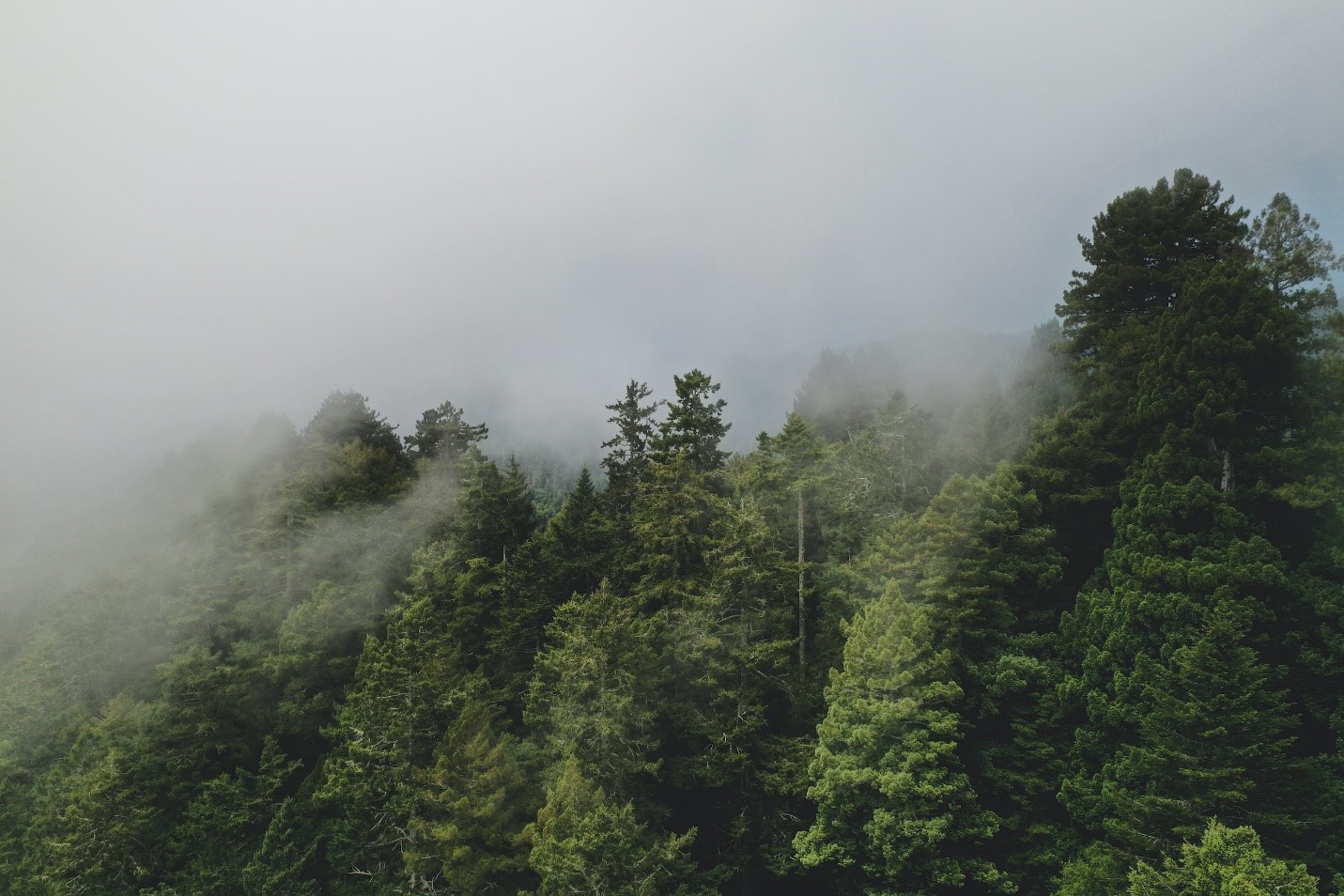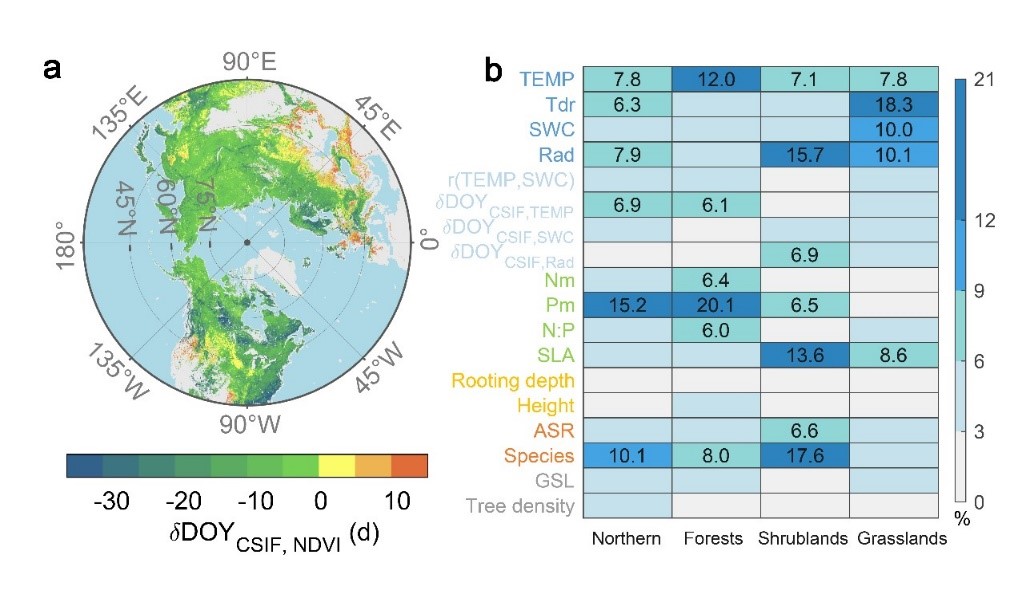Peking University, December 29, 2022: A study led by PKU staff and students reveals that late canopy development in Northern ecosystems hinders seasonal peak photosynthesis.
The dynamic change mechanism of the seasonal peak rate of photosynthesis, also known as GPPmax (Maximum Gross Primary Productivity), has become a hot topic in carbon cycle research. In the Northern Hemisphere, the GPPmax of vegetation is closely related to the year-on-year variation of the ecosystem carbon sink function. Climate conditions and canopy structure are equally important factors affecting the size and occurrence time of the GPPmax of vegetation. The compatibility of their seasonal peak timings directly determines whether GPPmax is able to reach its maximum potential.
Therefore, in order to more accurately understand the carbon sequestration potential of vegetation in the Northern Hemisphere, it is necessary to understand how the canopy structure of vegetation in the Northern Hemisphere adjusts to changes in environmental conditions, thereby affecting the occurrence time of GPPmax, in times of rapid climate change.
The research group led by Academician Piao Shilong from Peking University College of Urban and Environmental Sciences conducted quantitative analysis on the GPPmax time and normalized difference vegetation index (NDVI, which characterizes the canopy structure of vegetation) of vegetation in the Northern Hemisphere from the past 20 years, and compared the differences in seasonal peak timings and variation mechanisms. Their research was based on multisource remote sensing and flux observation data, combined with machine learning methods.
The study found that compared with the GPPmax time of vegetation, the seasonal peak time of vegetation canopy structure lagged by an average of 8 days, mainly due to climate and nutrient limitations (as shown in the figure below). Over the past 20 years, the increase in atmospheric CO2 concentration has led to an earlier GPPmax time of vegetation. However, the peak time of vegetation canopy structure remained relatively stable, limited by climate and nutrient conditions. As a result, the mismatch in peak timing between the two is increasing. The study proved that the current ecosystem model does not accurately reflect the spatial-temporal dynamics between GPPmax time of vegetation and peak time of canopy structure. Therefore, related mechanisms have to be enhanced. This study provides a new perspective for understanding the dynamic mechanism of vegetation growth seasons in the Northern Hemisphere.
Figure: Temporal differences in the seasonal peaks of vegetation photosynthesis and canopy structure in the northern hemisphere (a, green indicates the first peak of photosynthesis, yellow indicates the first peak of canopy structure) and the relative contribution of different factors to the spatial variation of the temporal difference (b).
The study, titled “Seasonal peak photosynthesis is hindered by late canopy development in Northern ecosystems” (
doi: 10.1038/s41477-022-01278-9), has been published in
Nature Plants. The first author of the paper is Zhao Qian, a doctoral student at Peking University College of Urban and Environmental Sciences since 2020. Piao Shilong and Zhu Zaichun, a researcher at Peking University Shenzhen Graduate School, are co-corresponding authors.
Written By: Wu Jiayun
Edited By: Ng Joong Hwee
Cover photo: Unsplash
Source: PKU News (
Chinese)

